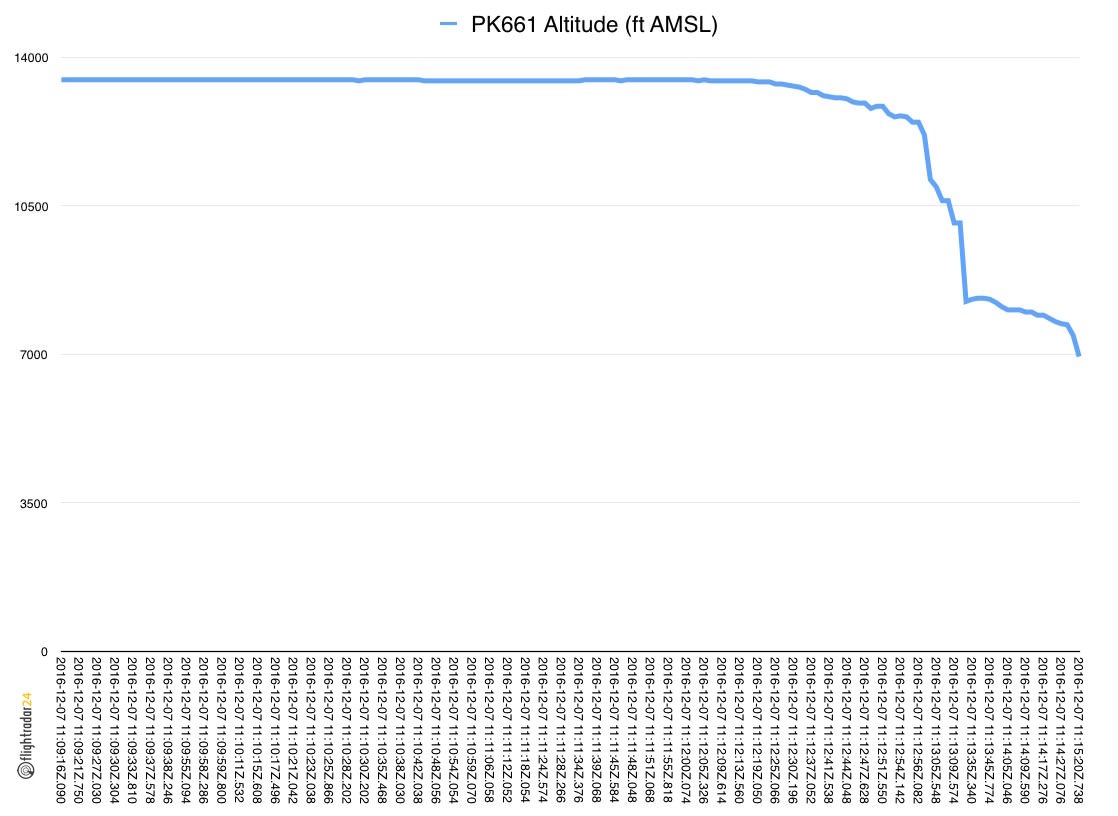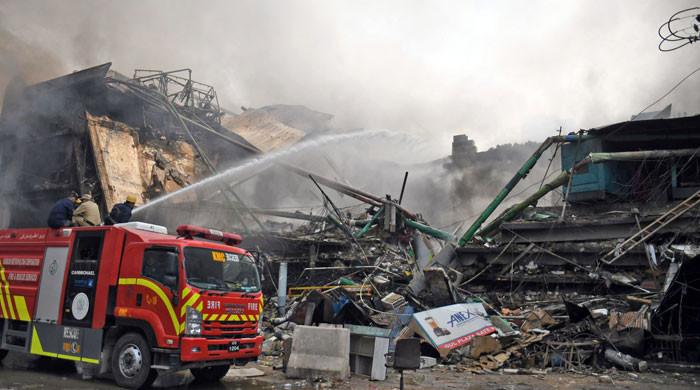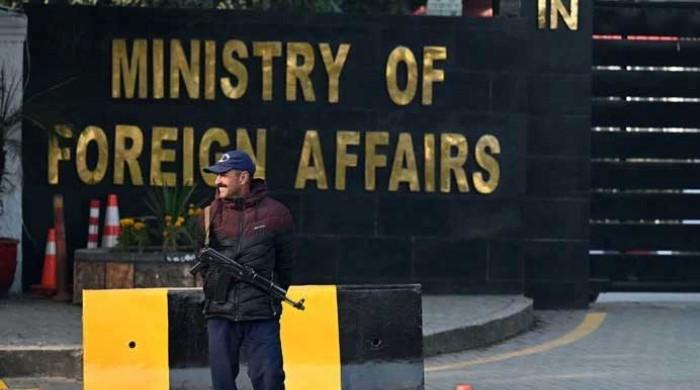PK661: Tracing the last moments before the crash
KARACHI: The ill-fated PIA ATR-42 operating as PK661 from Chitral to Islamabad crashed on Wednesday with 48 onboard, including crewmembers.
According to PIA management, the pilot Captain...
December 08, 2016

KARACHI: The ill-fated PIA ATR-42 operating as PK661 from Chitral to Islamabad crashed on Wednesday with 48 onboard, including crewmembers.
According to PIA management, the pilot Captain Salehyar Janjua declared an emergency at 4:14PM and, minutes later, the plane vanished from radar.
The airline’s chairman, Azam Saigol, told journalists in Islamabad that the plane had, in fact, lost one engine, but also made it clear that the aircraft was technically sound and had been inspected in October this year.
This article is not an attempt to place blame, nor an attempt to absolve.
Here, we will try to trace the last few minutes of the ill-fated plane using data and excerpts from the communication between the control tower, PK661 and other aircraft in the area that were trying to communicate with the ill-fated ATR-42, as well as spatial data available for aircraft that can be heard in the partial audio communication released.
Flight Data
According to the flight data available with Geo.tv, the ATR-42 operating as PK661 was maintaining an altitude of 13,375 until 25 seconds past 4:12PM.
In the next 45 seconds, the aircraft plummeted 3,250 feet to an altitude of 10,100 feet; over the next 10 seconds, PK661 lost another 1,850 feet, descending to 8,250 feet.
The ATR-42 then attempted to climb and managed to increase its altitude by 75 feet to 8,325 – an indication that the pilot may have been trying to avoid densely populated areas before proceeding with what seemed like a controlled descent; losing altitude gradually over the next 90 seconds before vanishing at 20 seconds past 4:15 PST.
Audio Recordings
Multiple audio recordings surfaced on Wednesday after the crash. One file was being circulated as an audio recording of passengers panicking in the last 60 seconds before PK661 crashed – that file has been proven to be a fake.
Three other audio files were also doing the rounds: we will refer to them as File One, which is a 21-second audio clip; File Two, a 56-second audio clip with another longer version; and, a 1-minute 51-second audio clip that includes both File One and File Two, we will refer to as File Three and is the one we will analyze.
The file starts with what could possibly be PK661 informing Islamabad Radar that it is maintaining Squawk identification 2022, or another aircraft relaying to Islamabad Radar that PK661 is squawking 2022.
“Islamabad Radar Pakistan 661 squawk… Squawking 2022 Pakistan 661”
What is Squawking?
Every aircraft uses a squawk identification that shows up on radar and enables the radar to identify the aircraft. PIA PK661 was identifying as 2022 on the radar throughout the flight.
Why is the squawk code important? Every time an aircraft declares an emergency situation, the aircraft starts squawking using a different identifier. If the aircraft is facing radio failure it will squawk-7600 or in case of a general emergency it shall squawk 7700.
Since the audio is confirming that PK661 is squawking as 2022 which was the normal squawk identifier, it can either mean the aircraft lost communication before it could shift to emergency squawk, or that the radar and tower had acknowledged the emergency and there was no need for shifting to squawk 7700.
The very next audio is a request for lowering altitude to 10,500 feet.
“QNH 1016 requesting lower altitude 10,500 feet Pakistan 661”
The aircraft is informing the QNH which denoted the air pressure and requests lowering altitude, which according to the earlier Flight Data could be PK661 as it descended from 13,375 to 10,100. However speaking to experts and pilots, an aircraft losing 5,000 feet in 60 seconds is a very fast descent. A normal descent would be around 1,000 to 2,000 feet per minute.
The next audible chatter we hear on the communication is much clearer and the aircraft identifies itself – the first part of its identification handle is inaudible and the last part can be made out as ‘47’. The aircraft then relays a message to PK661 on behalf of the Islamabad control tower.
“Pakistan 661 its ‘inaudible’-47 Islamabad asking to switch on transponder for a shorter vector”
The communication from this aircraft tells us that Islamabad couldn’t see PK661 on its radar and was therefore asking other aircraft in the area to communicate with PK661 and ask them to switch on their transponder.
Experts say it is possible that PK661’s transponder was switched on, but due to the hilly terrain, radar was unable to detect the ATR-42.
The next audible audio is what sounds like aircraft ‘47’ relaying to Islamabad that PK661 is maintaining squawk identifier 2022.
“Islamabad Pakistan 661 maintaining 2022 on the squawk”
Experts say in case of such a communication breakdown, other aircraft in the area relay messages to and from the tower and the aircraft.
The aircraft -47 is heard informing PK661 that it is clear to land on any runway.
“Pakistan 661 its ‘inaudible’-47 you are clear to land 12 and 30 runway both available when visual with ground”
The aircraft-47 again asks if PK661 heard the message it passed on.
A second aircraft Shaheen-122 is then heard on the recording asking if PK661 can hear them.
This second aircraft gives us additional information. Shaheen-122 or NL-122 took off after delays from Islamabad at 4:14 PM. This confirms that the communication is taking place after 4:14PM.
Since the audio is of a common channel, we can hear Shaheen-122, which was bound for Karachi, asking for instructions after sharing its heading/direction and requesting to climb higher.
In the remaining audio, we can hear the aircraft-47 trying to raise PK661 and relaying Islamabad’s instructions that PK661 is clear to land at Islamabad when it has a visual with the ground.
That is where the audio ends.
Going by the bits and pieces of information available, and the flight data available from online flight tracking service flightradar24, we have tried to piece together the last few minutes of the ill-fated PIA flight PK661.
PK-661 vanished from radar around 4:15PM, which has been confirmed by the airline as well. The time it crashed however varies depending on the sources the information is received from. Eyewitnesses claim the plane crashed a little after 4:30PM. If the speed of descent is accurate, the aircraft was losing over 2,000 feet per minute before it vanished. If it continued descending on the same trajectory it is possible it hit ground earlier.
Note: Since the information used for this piece is incomplete and does not include the May Day call from PK661, it cannot be independently confirmed if the aircraft had lost one or both engines.

Photo: flightradar24
Ovais Jafar is a multimedia journalist, he tweets as @ovaisjafar











